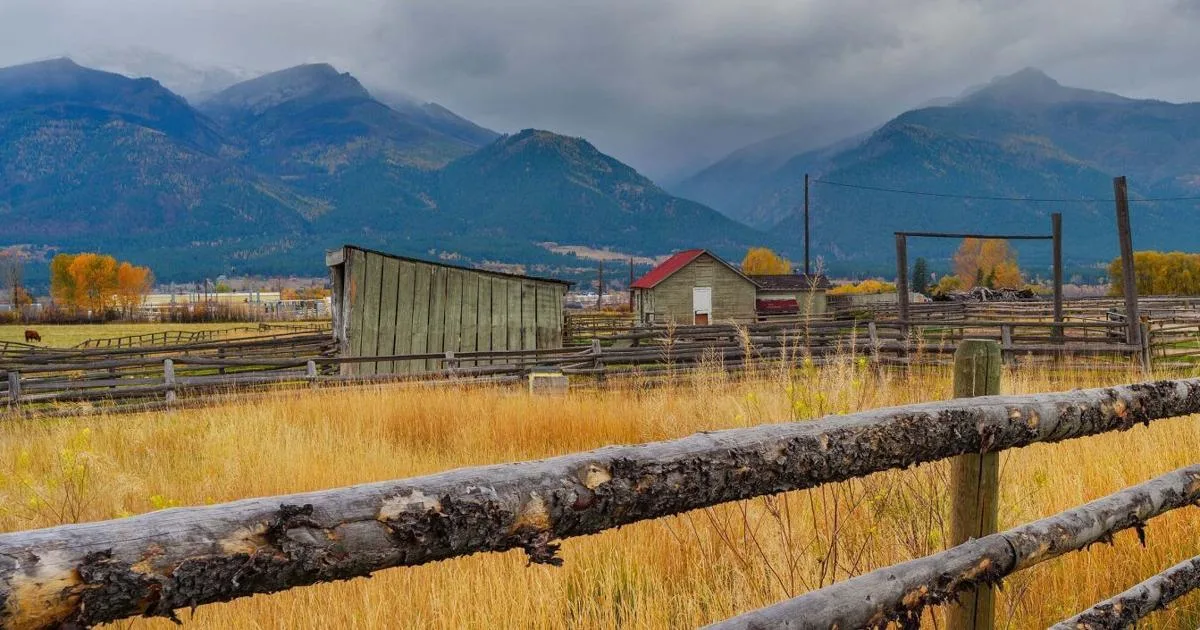BRETT FRENCH bfrench@billingsgazette.com
To make something perpetual is everlasting and permanent — so a long, long time.
When it comes to paying landowners not to develop their property using perpetual conservation easements, that’s way too long for people like Chuck Denowh of United Property Owners of Montana.
“Landowners are not receiving the full value for their easement when it’s in such a long-time horizon situation like a perpetual easement,” Denowh told the Senate Judiciary Committee on Tuesday.
“So that landowner in 1980 who received a conservation easement received far less value than they would get today, even after they adjust for inflation,” he added, testifying in support of Senate Bill 209. “And a landowner today is probably going to get a vastly lower value for a conservation easement than they would get 40 years in the future.”
Disagreement
More than 30 landowners, business representatives and conservation groups united in their opposition to the legislation.
They cited the benefits of perpetual easements including protection of wildlife habitat, excluding development on traditional agricultural land, lowering land values so property is more affordable for new buyers and helping to keep landowners on property that has been in the family for generations.
“I’ve always told folks that are contemplating a conservation easement, ‘If you’re doing it for the money, you’re doing it for the wrong reason,’” said Potomac landowner Denny Iverson whose family has three conservation easements on property they own. “This is a long-term decision, but I can tell you, our ranch is worth a whole lot more today, even with the conservation easement on it, than it was in 2006.”
Bill withdrawn
SB 209, sponsored by Sen. Tony Tezak, R-Ennis, would limit all conservation easements in Montana to 40 years, prohibit the easement from limiting ag activities as well as making sure the easement was never conferred to “federal control.”
But moments after he introduced the measure to the Senate Judiciary Committee, chaired by one of the bill’s co-sponsors, Tezak “regrettably decided” to recommended they pause action on the measure. A similar bill was tabled in committee in 2023. Still, Tezak asked the lawmakers to hear testimony because of the “interest and passion” on both sides of the issue.
“One of the reasons I came to Helena was my desire to protect our Montana way of life,” Tezak said. “A big part of that way of life, for me, is ranching and agriculture. My family, for generations, have been involved in that industry.”
Political issue
Under the leadership of Republican Gov. Greg Gianforte, the Montana Department of Fish, Wildlife & Parks has adopted a philosophy similar to United Property Owners of Montana. The agency has moved away from purchasing perpetual conservation easements to instead advocate for 30- to 40-year conservation leases, focusing on property owners in Eastern Montana.
“It provides an option for landowners who are reluctant to commit to a permanent easement, which often are easier to get support for with landowners and result in more habitat conservation and public access,” FWP Director Christy Clark said in a statement released the day before SB 209 was heard.
The release was titled “Conservation leases gaining steam in Montana: FWP program gives landowners more options for habitat conservation.”
Started in 2022, the agency’s goal is to enroll 500,000 acres in five years. Following a slow start, 15 landowners have enrolled about 131,000 acres.
Although the agency touts the leases as an alternative to perpetual conservation easements, the Gianforte administration has added more hurdles for long-term agreements, including requiring support from the related county commission and State Land Board approval for purchases over $1 million.
Pumped for perpetual
Yet if testimony at Tuesday’s hearing is any indication, perpetual conservation easements remain popular with some landowners. These include businesses like Green Diamond Resource Co. which owns about 300,000 acres of forest in northwest Montana.
“A lot of the timber value has been removed from those acres,” said the company’s Jason Callahan. “So we have now what we consider a generational investment. We plan on staying on working forestry, harvesting timber, growing and harvesting timber for as long as we can as a company. What the conservation easements allow us to do is pay for that forest while it comes back into production. It needs time to rest and it needs time to heal back, 15 or 30 years, before that forest can pay for itself. Conservation easements allow us to keep the lights on.”
Representatives from conservation groups like the Rocky Mountain Elk Foundation and Wild Sheep Foundation endorsed perpetual easements to protect habitat for wildlife their members value, agreements that often come provide access for public hunters.
“As a hunter conservation organization with more than 15,000 members in Montana, we recognize the importance of using many different tools to incentivize private land conservation for agriculture, wildlife, habitat and hunting,” said Blake Henning, chief conservation officer for RMEF. “Access easements aren’t for everyone, but they need to be an option for the landowners we work with here in Montana and beyond.”
Landowner tales
A number of landowners also testified in support of perpetual conservation easements, often stressing the importance of private property rights that should allow them to decide whether to commit to the long-term contracts rather than be restricted by state government.
“We would prefer smaller government, and we’d prefer private property rights,” said Stevensville landowner Dan Ellison, of Ellison Cattle Co. “Those seem to be embodied in our Constitution, and this bill would not have allowed us to proceed with an easement had it been in place.”
Mark Juedeman, whose family ranch along the Missouri River near Great Falls is in a conservation easement, put it more bluntly.
“SB 209 would get up in our business and remove this option for landowners like us, denying our private property rights to decide what is best,” he said. “It’s not the business of the state of Montana to decide what we do with our property.”
Landowners like Alan Martinell, who ranches along the Red Rock River in southwestern Montana’s Centennial Valley, pointed to a conservation easement as ensuring property his grandfather bought in 1893 remained in the family as it was added to and divided by the succeeding generations.
“During the transition, our ranch would have likely been sold out of our family if it had not been for conservation easements,” Martinell said. “Periods of low market prices, high interest rates and increasing land prices make it exceedingly difficult to borrow money to achieve our goals.”
Yet Denowh, of United Property Owners of Montana, called such stories the tales of “distressed sellers” entering arrangements with land trusts who use appraisers who have a vested interest in seeing such deals completed.
“Landowners are often put in a very difficult position and use these conservation easements when they otherwise wouldn’t,” Denowh said. “I just worry that we’re going to look back in 100 years and really regret what we’ve done with conservation easements.”
Kendall Van Dyk, managing director of the Montana Land Reliance, was credited by Sen. Tezak for talking him into having the bill tabled. He told the Senate committee Tezak’s decision was evidence that there is more that unites Montanans than divides them. Van Dyk, a former Billings legislator, said it was “patently false” that some landowners are distressed when entering the contracts.
“To suggest that they’re just seeking a bailout I think is a disrespect to Montana’s ag community,” he said.
Cooper Hibbard manages the Sieben Livestock Co. between Helena and Great Falls, the fifth generation to run the operation. He gave an impassioned plea to keep perpetual easements available for landowners like his family.
“As a fellow rancher, it is getting increasingly difficult to keep ranches and farms and generational families. There’s a litany of reasons for this, but estate taxes threaten us the most. Ranchers and farmers are asset rich and cash poor. We sit on land that is valued infinitely higher than its actual ability to produce revenue.
“Therefore, when a family tries to transfer from one generation to the next it becomes a challenge to pay the tax without selling assets, which is usually the ranch or farm itself or chunks of it. Thirty years ago, our family started tackling how to construct an estate plan that gave us the best probability of ensuring the ranch transferred fully intact from the fourth generation to the fifth. We looked at all the tools — life insurance, trusts, different corporate structures — but it became clear that a conservation easement was the best estate planning tool at our disposal to mitigate taxes.
“Our family discussed an easement for years. For over two years, we had very in-depth discussions, and that morphed into an interesting conversation. It started out as an as a tool to mitigate estate taxes and then morphed into what we, as a surviving four generations, truly wanted to see on that land. And that was to see it intact, wild, in perpetuity, in agriculture as it was, forever.”



